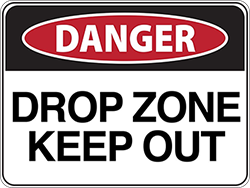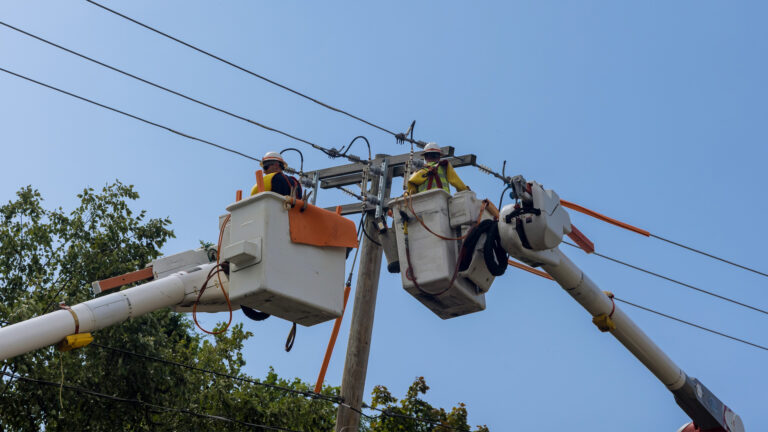The Drop Zone
Expanding our view of line of fire. This week takes a closer look at a line-of-fire issue, specifically the drop hazard created when working aloft. Unfortunately, year after year utility workers are injured when objects are inadvertently dropped from heights, creating a significant threat for those on the ground.

Since the Beginning of Line Work
Anytime overhead work is performed there is a real risk of equipment, materials or tools falling from the elevated position. Traditionally we consider the area under the work position to be considered the “drop zone.” For more than 100 years, aerial lineworkers have known there is danger lurking for anyone who is under or near the elevated work position. The area under the work may be known as the “pocket,” “the hole” or a unique name used by you and your co-workers, but it’s widely known across the nation that this is an area of concern for anyone on the ground.
It’s All About the Physics
Any object dropped from a height creates a significant amount of force. The higher the aerial work being performed, the more force the dropped object will generate. For example, a 2-pound ceramic insulator dropped from 30 feet creates about 6,000 pounds of force. Now consider that a 180-pound professional boxer throws a punch somewhere between 1,200 to 1,800 pounds of force. That 2-pound ceramic insulator is generating two to three times more force than the boxer. That may be surprising to some people, but it’s all about the physics.
How To Manage the Drop Zone
The following are things you and your crew members can do to minimize hazards:
Establish a clearly identified drop zone below the elevated position. This shall be discussed during the pre-job briefing, and include the zone boundaries and practices employed to control drop hazards. Practices include:
- Keeping the zone clear of workers while work is occurring overhead
- Stopping overhead activities and ensuring all material is positively under control if there is an unavoidable need for a crew member to enter the zone.
- Situation awareness and good verbal and visual communication with those aloft to ensure crew members below are clear of potential injury threats.
Lastly: ALWAYS WEAR 100% OF YOUR PPE TO INCLUDE YOUR HARD HAT *w/ chin strap if needed




